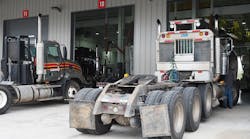The Federal Motor Carrier Safety Administration recently announced that it is gathering information on the role of maintenance in vehicle safety.
One area FMCSA wants to focus on is understanding what is meant by “systematic.” Current regulations say that fleets must have programs to “systematically inspect, repair and maintain” trucks. However, there is no clear-cut definition of what systematic means.
Whether you participate in the survey or not, now might be a good time to review your own maintenance procedures to determine just how systematic they are.
Here are some questions to think about to help you determine just where you fall on the having a systematic process in place scale:
- What percentage of your trucks are up-to-date on their maintenance service?
- Do you track PM compliance and ensure that trucks are getting the needed maintenance inspections and service they need even if they are not making it back to your terminal?
- Do you know how often maintenance is deferred?
- Does every one of your terminals use the same PMI form so that all trucks in your fleet get inspected the same way each and every time they are in the shop?
- Do you insist the outside service providers follow your PMI procedure when trucks are in their shops?
- Are your technicians up-to-date on properly performing maintenance inspections and perform PM services?
Your answers to the above questions will help you spot gaps and see problem areas. Once you know what’s wrong you can revise your processes and procedures to address those needs and make your maintenance process more consistent across your entire fleet.
Having a systematic maintenance inspection and service procedure in place we can help ensure that each and every truck in your fleet will be in top operating condition to operate safely on the roads. And isn’t that really what we all want?



